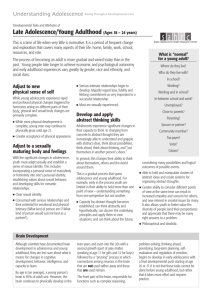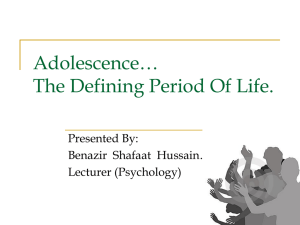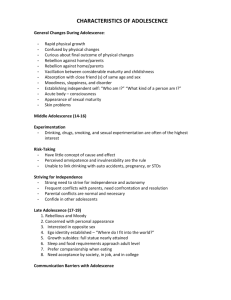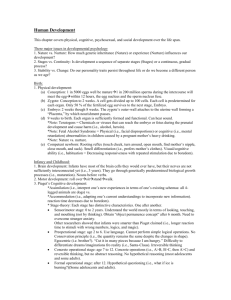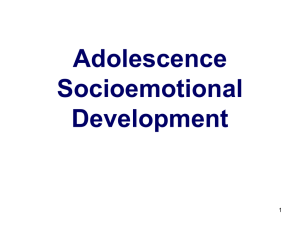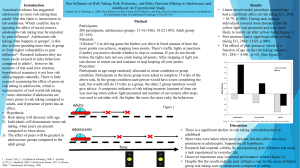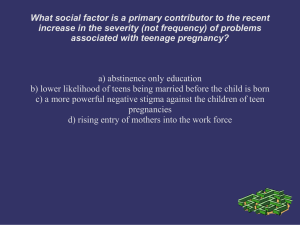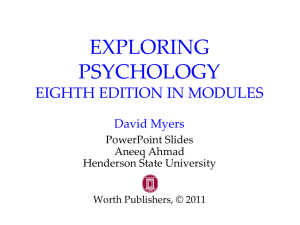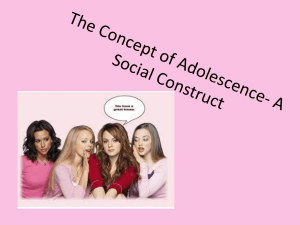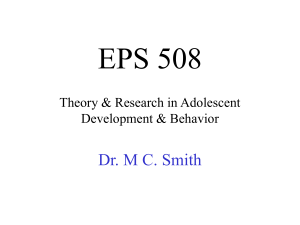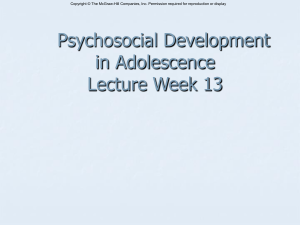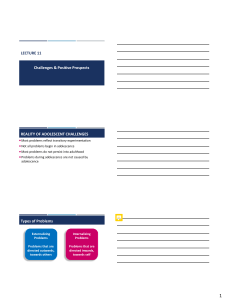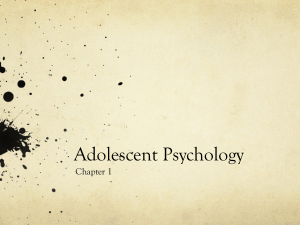adolescence
advertisement
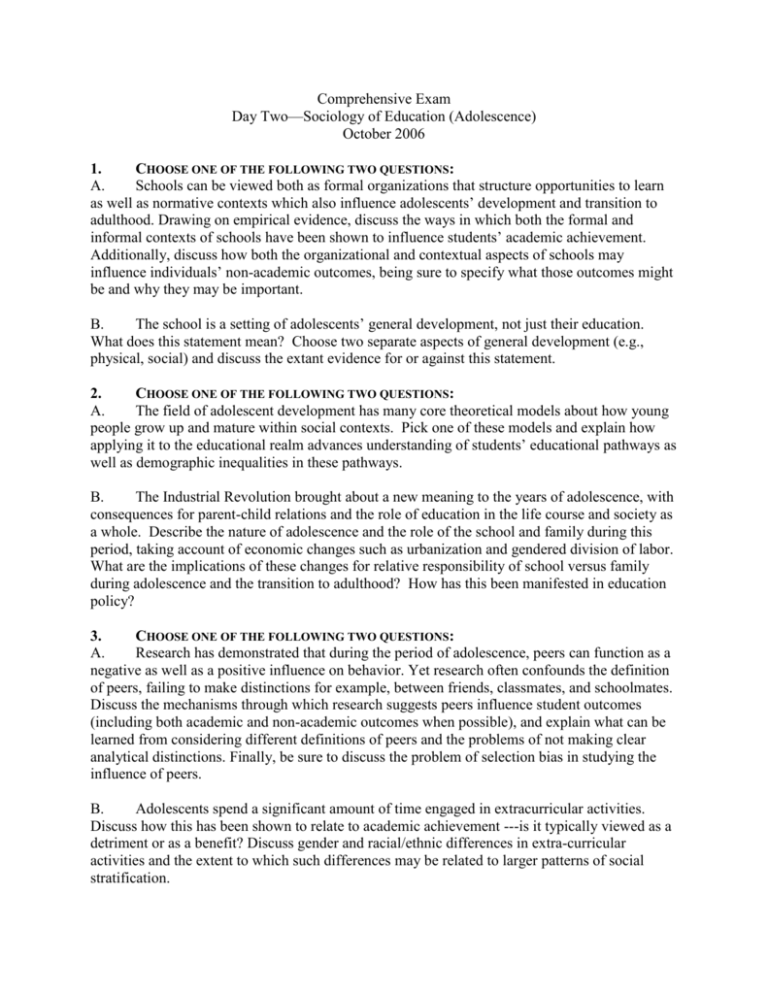
Comprehensive Exam Day Two—Sociology of Education (Adolescence) October 2006 1. CHOOSE ONE OF THE FOLLOWING TWO QUESTIONS: A. Schools can be viewed both as formal organizations that structure opportunities to learn as well as normative contexts which also influence adolescents’ development and transition to adulthood. Drawing on empirical evidence, discuss the ways in which both the formal and informal contexts of schools have been shown to influence students’ academic achievement. Additionally, discuss how both the organizational and contextual aspects of schools may influence individuals’ non-academic outcomes, being sure to specify what those outcomes might be and why they may be important. B. The school is a setting of adolescents’ general development, not just their education. What does this statement mean? Choose two separate aspects of general development (e.g., physical, social) and discuss the extant evidence for or against this statement. 2. CHOOSE ONE OF THE FOLLOWING TWO QUESTIONS: A. The field of adolescent development has many core theoretical models about how young people grow up and mature within social contexts. Pick one of these models and explain how applying it to the educational realm advances understanding of students’ educational pathways as well as demographic inequalities in these pathways. B. The Industrial Revolution brought about a new meaning to the years of adolescence, with consequences for parent-child relations and the role of education in the life course and society as a whole. Describe the nature of adolescence and the role of the school and family during this period, taking account of economic changes such as urbanization and gendered division of labor. What are the implications of these changes for relative responsibility of school versus family during adolescence and the transition to adulthood? How has this been manifested in education policy? 3. CHOOSE ONE OF THE FOLLOWING TWO QUESTIONS: A. Research has demonstrated that during the period of adolescence, peers can function as a negative as well as a positive influence on behavior. Yet research often confounds the definition of peers, failing to make distinctions for example, between friends, classmates, and schoolmates. Discuss the mechanisms through which research suggests peers influence student outcomes (including both academic and non-academic outcomes when possible), and explain what can be learned from considering different definitions of peers and the problems of not making clear analytical distinctions. Finally, be sure to discuss the problem of selection bias in studying the influence of peers. B. Adolescents spend a significant amount of time engaged in extracurricular activities. Discuss how this has been shown to relate to academic achievement ---is it typically viewed as a detriment or as a benefit? Discuss gender and racial/ethnic differences in extra-curricular activities and the extent to which such differences may be related to larger patterns of social stratification.




